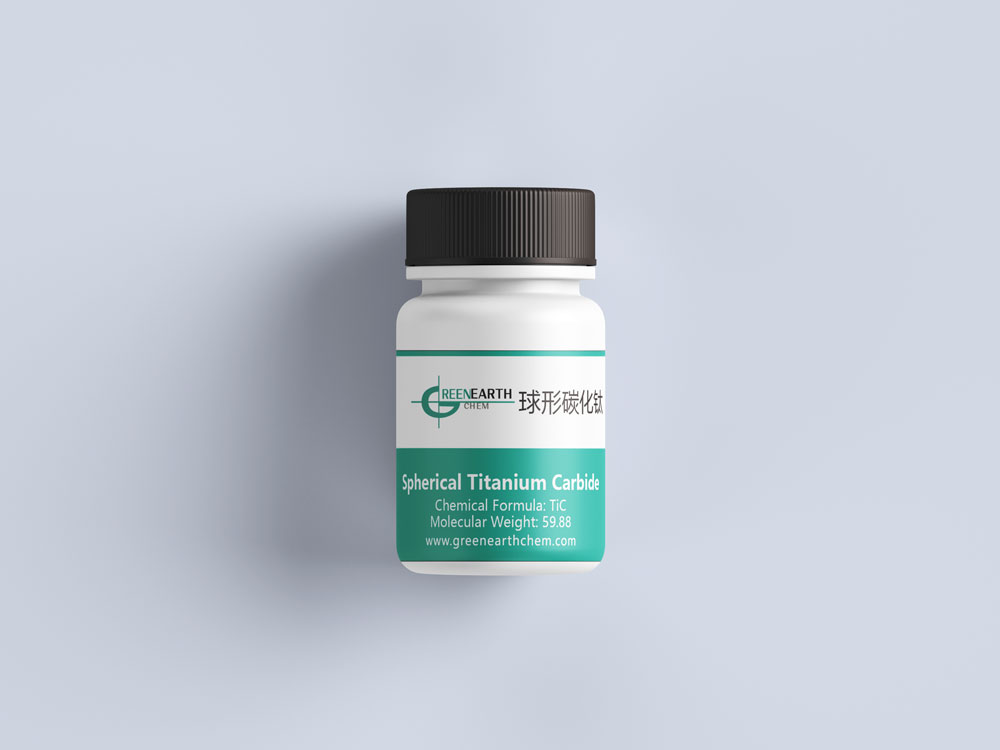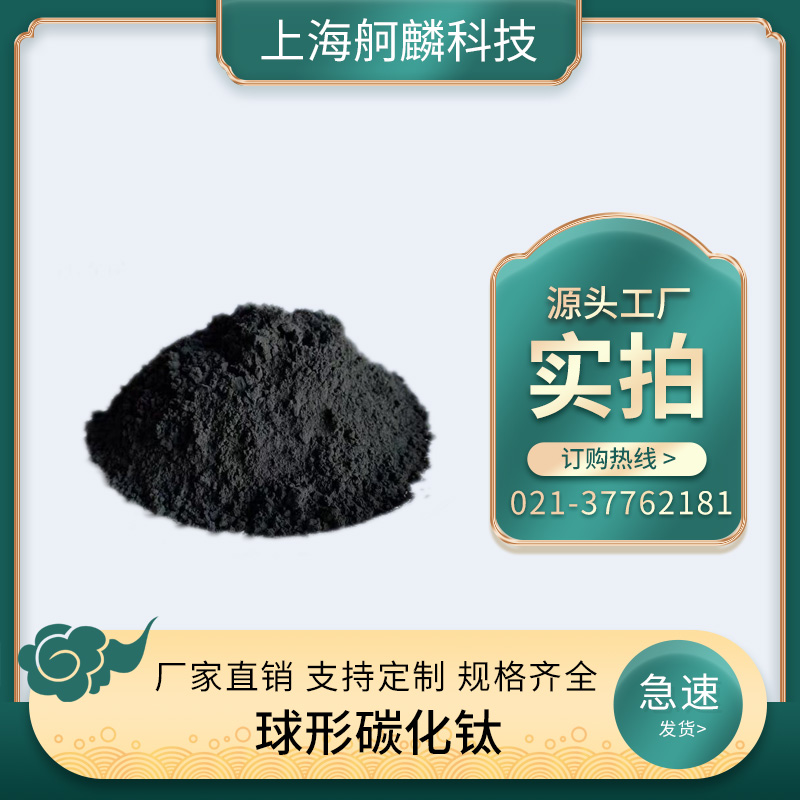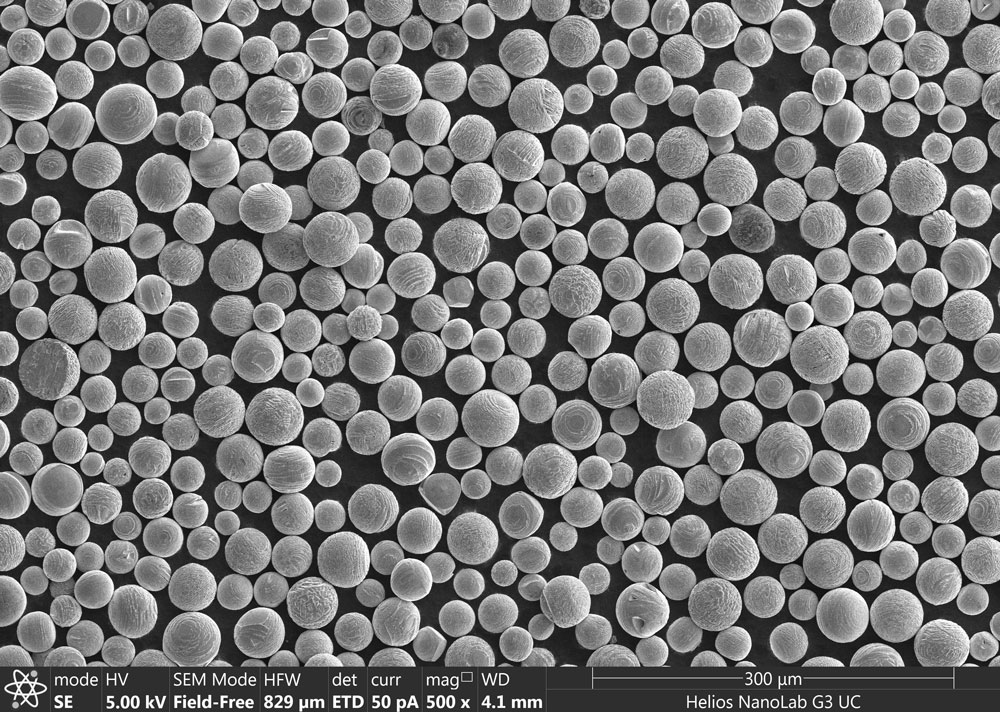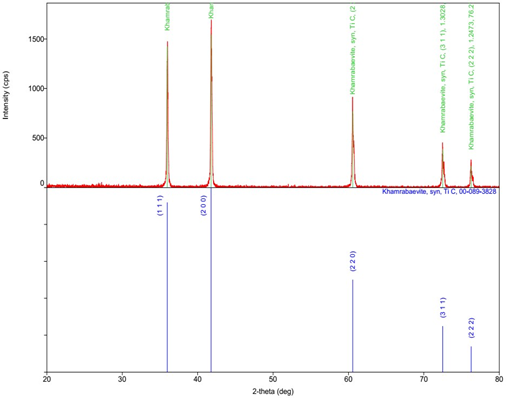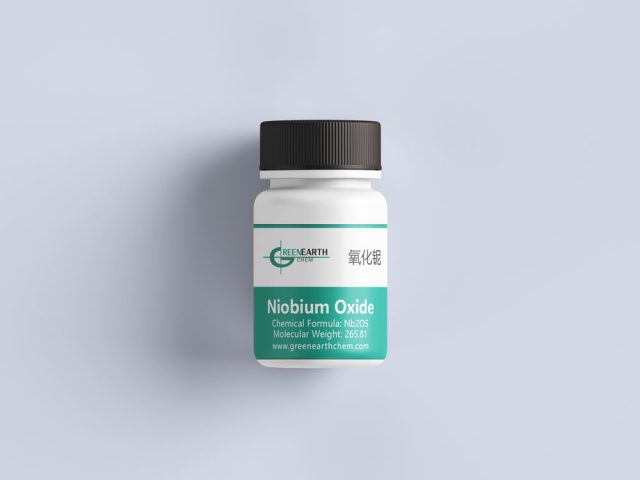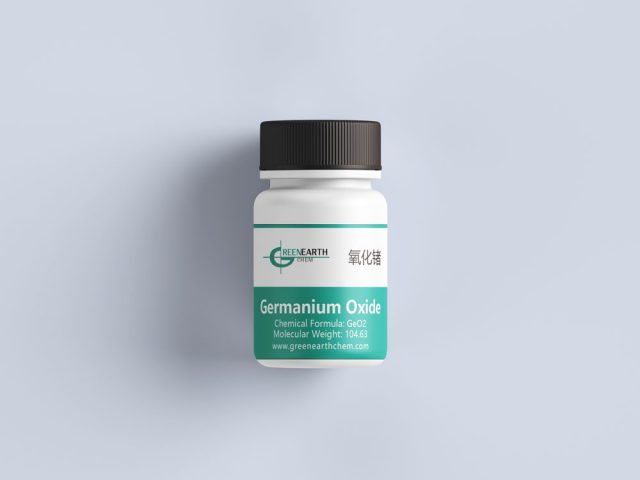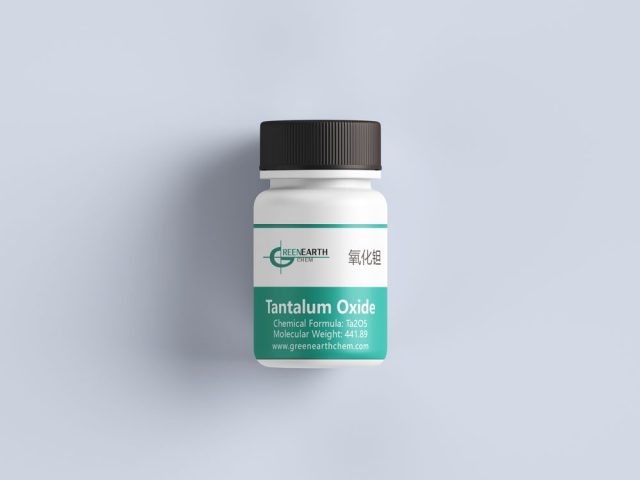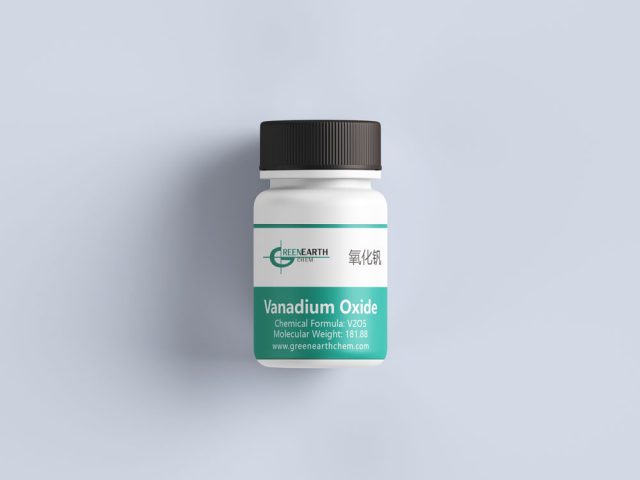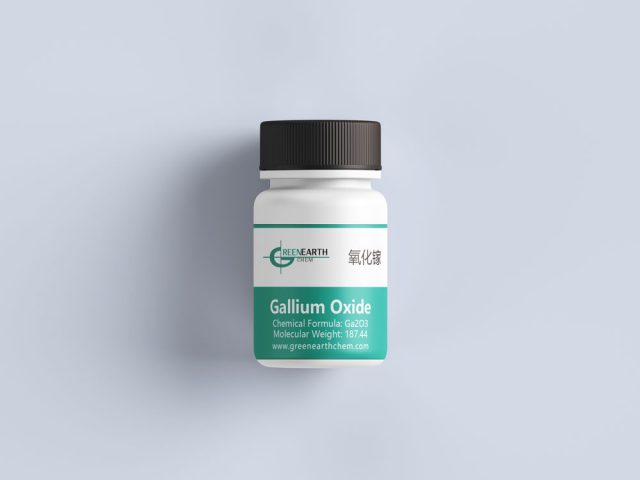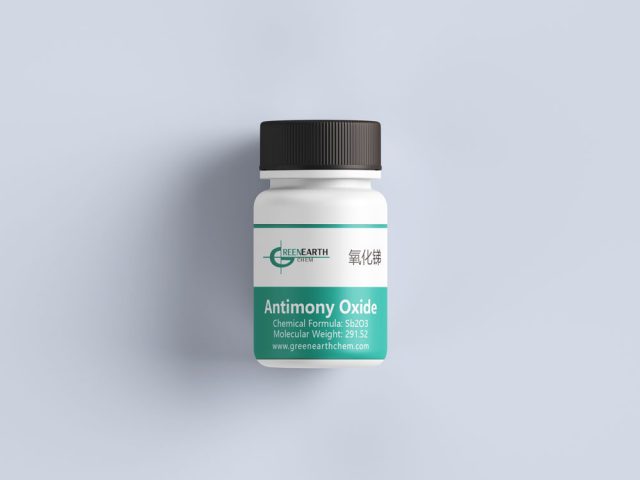- 描述
- 规格
- 应用
- MSDS
描述
球形碳化钛粉末,3D 打印碳化钛粉末
关于球形碳化钛
碳化钛的化学式为TiC,是钛和碳的化合物
球形粉体,射频等离子球化法生产,球化率高,结构致密
粒径:75-45 um, 53-15um,45-15um 或者定制加工
流速:16g/50S
碳化钛含量:>99.5%
是否危险化学品: 否
该产品对钢铁具有良好的电导率和化学惰性能力
1.密度(g/cm3,25℃):4.93
2. 熔点(℃):3140
3.沸点(℃,常压):4820
4.溶解性:溶于硝酸,不溶于水。
5. 莫氏硬度:9 ~ 10
6. 热膨胀系数(K): 7.74×10-6
7.导热系数(W/ (M·K)): 21
8. 生成热(kJ/mol): -183.4
9. 弹性模量(GPa): 400
规格
应用
- 应用于硬面材料,3D 打印,等离子喷涂,激光熔覆,超硬复合材料
MSDS
MATERIAL SAFETY DATA SHEETS
According to the UN GHS revision 8
Version: 1.0
Creation Date: Aug 21, 2020
Revision Date: Aug 21, 2020
SECTION 1: Identification
1.1
GHS Product identifier
| Product name |
Titanium Carbide |
|---|
1.2
Other means of identification
| Product number |
– |
|---|---|
| Other names |
titanium,carbide |
1.3
Recommended use of the chemical and restrictions on use
| Identified uses |
Industrial and scientific research uses. |
|---|---|
| Uses advised against |
no data available |
1.4
Supplier’s details
| Company |
Shanghai Greenearth Chemicals Co.,Ltd |
|---|---|
| Address |
Building 2, No.5555, Shenzhuan Hwy, Shanghai , China |
| Telephone |
+86-021-3776-2181 |
1.5
Emergency phone number
| Emergency phone number |
+86-021-3776-2181 |
|---|---|
| Service hours |
Monday to Friday, 9am-5pm (Standard time zone: UTC/GMT +8 hours). |
SECTION 2: Hazard identification
2.1
Classification of the substance or mixture
no data available
2.2
GHS label elements, including precautionary statements
| Pictogram(s) | no data available |
|---|---|
| Signal word |
no data available |
| Hazard statement(s) |
no data available |
| Precautionary statement(s) | |
| Prevention |
no data available |
| Response |
no data available |
| Storage |
no data available |
| Disposal |
no data available |
2.3
Other hazards which do not result in classification
no data available
SECTION 3: Composition/information on ingredients
3.1
Substances
| Chemical name | Common names and synonyms | CAS number | EC number |
|---|---|---|---|
| Titanium Carbide | titanium,carbide | 12070-08-5 | 235-120-4 |
SECTION 4: First-aid measures
4.1
Description of necessary first-aid measures
If inhaled
Move the victim into fresh air. If breathing is difficult, give oxygen. If not breathing, give artificial respiration and consult a doctor immediately. Do not use mouth to mouth resuscitation if the victim ingested or inhaled the chemical.
Following skin contact
Take off contaminated clothing immediately. Wash off with soap and plenty of water. Consult a doctor.
Following eye contact
Rinse with pure water for at least 15 minutes. Consult a doctor.
Following ingestion
Rinse mouth with water. Do not induce vomiting. Never give anything by mouth to an unconscious person. Call a doctor or Poison Control Center immediately.
4.2
Most important symptoms/effects, acute and delayed
no data available
4.3
Indication of immediate medical attention and special treatment needed, if necessary
no data available
SECTION 5: Fire-fighting measures
5.1
Suitable extinguishing media
Use dry chemical, carbon dioxide or alcohol-resistant foam.
5.2
Specific hazards arising from the chemical
no data available
5.3
Special protective actions for fire-fighters
Wear self-contained breathing apparatus for firefighting if necessary.
SECTION 6: Accidental release measures
6.1
Personal precautions, protective equipment and emergency procedures
Avoid dust formation. Avoid breathing mist, gas or vapours.Avoid contacting with skin and eye. Use personal protective equipment.Wear chemical impermeable gloves. Ensure adequate ventilation.Remove all sources of ignition. Evacuate personnel to safe areas.Keep people away from and upwind of spill/leak.
6.2
Environmental precautions
Prevent further spillage or leakage if it is safe to do so. Do not let the chemical enter drains. Discharge into the environment must be avoided.
6.3
Methods and materials for containment and cleaning up
Collect and arrange disposal. Keep the chemical in suitable and closed containers for disposal. Remove all sources of ignition. Use spark-proof tools and explosion-proof equipment. Adhered or collected material should be promptly disposed of, in accordance with appropriate laws and regulations.
SECTION 7: Handling and storage
7.1
Precautions for safe handling
Handling in a well ventilated place.
Wear suitable protective clothing.
Avoid contact with skin and eyes.
Avoid formation of dust and aerosols.
Use non-sparking tools.
Prevent fire caused by electrostatic discharge steam.
7.2
Conditions for safe storage, including any incompatibilities
Store the container tightly closed in a dry, cool and well-ventilated place. Store apart from foodstuff containers or incompatible materials.
SECTION 8: Exposure controls/personal protection
8.1
Control parameters
Occupational Exposure limit values
no data available
Biological limit values
no data available
8.2
Appropriate engineering controls
Ensure adequate ventilation.
Handle in accordance with good industrial hygiene and safety practice.
Set up emergency exits and the risk-elimination area.
8.3Individual protection measures, such as personal protective equipment (PPE)
Eye/face protection
Wear tightly fitting safety goggles with side-shields conforming to EN 166(EU) or NIOSH (US).
Skin protection
Wear fire/flame resistant and impervious clothing. Handle with gloves. Gloves must be inspected prior to use. Wash and dry hands. The selected protective gloves have to satisfy the specifications of EU Directive 89/686/EEC and the standard EN 374 derived from it.
Respiratory protection
If the exposure limits are exceeded, irritation or other symptoms are experienced, use a full-face respirator.
Thermal hazards
no data available
SECTION 9: Physical and chemical properties and safety characteristics
| Physical state |
powder |
|---|---|
| Colour |
dark gray |
| Odour |
no data available |
| Melting point/freezing point |
no data available |
| Boiling point or initial boiling point and boiling range |
no data available |
| Flammability |
no data available |
| Lower and upper explosion limit/flammability limit |
no data available |
| Flash point |
no data available |
| Auto-ignition temperature |
no data available |
| Decomposition temperature |
no data available |
| pH |
no data available |
| Kinematic viscosity |
no data available |
| Solubility |
no data available |
| Partition coefficient n-octanol/water |
no data available |
| Vapour pressure |
no data available |
| Density and/or relative density |
no data available |
| Relative vapour density |
no data available |
| Particle characteristics |
no data available |
SECTION 10: Stability and reactivity
10.1
Reactivity
no data available
10.2
Chemical stability
no data available
10.3
Possibility of hazardous reactions
no data available
10.4
Conditions to avoid
no data available
10.5
Incompatible materials
no data available
10.6
Hazardous decomposition products
no data available
SECTION 11: Toxicological information
Acute toxicity
- Oral: no data available
- Inhalation: no data available
- Dermal: no data available
Skin corrosion/irritation
no data available
Serious eye damage/irritation
no data available
Respiratory or skin sensitization
no data available
Germ cell mutagenicity
no data available
Carcinogenicity
no data available
Reproductive toxicity
no data available
STOT-single exposure
no data available
STOT-repeated exposure
no data available
Aspiration hazard
no data available
SECTION 12: Ecological information
12.1
Toxicity
- Toxicity to fish: no data available
- Toxicity to daphnia and other aquatic invertebrates: no data available
- Toxicity to algae: no data available
- Toxicity to microorganisms: no data available
12.2
Persistence and degradability
no data available
12.3
Bioaccumulative potential
no data available
12.4
Mobility in soil
no data available
12.5
Other adverse effects
no data available
SECTION 13: Disposal considerations
13.1
Disposal methods
Product
The material can be disposed of by removal to
a licensed chemical destruction plant or by controlled incineration
with flue gas scrubbing. Do not contaminate water, foodstuffs,
feed or seed by storage or disposal. Do not discharge to sewer systems.
Contaminated packaging
Containers can be triply rinsed (or equivalent) and
offered for recycling or reconditioning.
Alternatively, the packaging can be punctured to
make it unusable for other purposes and then be disposed of
in a sanitary landfill. Controlled incineration
with flue gas scrubbing is possible for combustible packaging materials.
SECTION 14: Transport information
14.1
UN Number
| ADR/RID: UN3178 | IMDG: UN3178 | IATA: UN3178 |
14.2
UN Proper Shipping Name
| ADR/RID:
FLAMMABLE SOLID, INORGANIC, N.O.S. |
IMDG:
FLAMMABLE SOLID, INORGANIC, N.O.S. |
IATA:
FLAMMABLE SOLID, INORGANIC, N.O.S. |
14.3
Transport hazard class(es)
| ADR/RID: 4.1 | IMDG: 4.1 | IATA: 4.1 |
14.4
Packing group, if applicable
| ADR/RID: III | IMDG: III | IATA: III |
14.5
Environmental hazards
| ADR/RID: No | IMDG: No | IATA: No |
14.6
Special precautions for user
no data available
14.7
Transport in bulk according to IMO instruments
no data available
SECTION 15: Regulatory information
15.1
Safety, health and environmental regulations specific for the product in question
| Chemical name | Common names and synonyms | CAS number | EC number |
|---|---|---|---|
| Titanium Carbide | titanium,carbide | 12070-08-5 | 235-120-4 |
| European Inventory of Existing Commercial Chemical Substances (EINECS) | Not Listed. | ||
| EC Inventory | Not Listed. | ||
| United States Toxic Substances Control Act (TSCA) Inventory | Not Listed. | ||
| China Catalog of Hazardous chemicals 2015 | Not Listed. | ||
| New Zealand Inventory of Chemicals (NZIoC) | Not Listed. | ||
| Philippines Inventory of Chemicals and Chemical Substances (PICCS) |
Not Listed. | ||
| Vietnam National Chemical Inventory | Not Listed. | ||
| Chinese Chemical Inventory of Existing Chemical Substances (China IECSC) |
Not Listed. | ||
| Korea Existing Chemicals List (KECL) | Not Listed. | ||
SECTION 16: Other information
Information on revision
| Creation Date | Aug 21, 2020 |
|---|---|
| Revision Date | Aug 21, 2020 |
Abbreviations and acronyms
- CAS: Chemical Abstracts Service
- ADR: European Agreement concerning the International Carriage of Dangerous Goods by Road
- RID: Regulation concerning the International Carriage of Dangerous Goods by Rail
- IMDG: International Maritime Dangerous Goods
- IATA: International Air Transportation Association
- TWA: Time Weighted Average
- STEL: Short term exposure limit
- LC50: Lethal Concentration 50%
- LD50: Lethal Dose 50%
- EC50: Effective Concentration 50%
References
- IPCS – The International Chemical Safety Cards (ICSC), website:
http://www.ilo.org/dyn/icsc/showcard.home - HSDB – Hazardous Substances Data Bank, website: https://toxnet.nlm.nih.gov/newtoxnet/hsdb.htm
- IARC – International Agency for Research on Cancer, website: http://www.iarc.fr/
- eChemPortal – The Global Portal to Information on Chemical Substances by OECD, website:
http://www.echemportal.org/echemportal/index?pageID=0&request_locale=en - CAMEO Chemicals, website: http://cameochemicals.noaa.gov/search/simple
- ChemIDplus, website: http://chem.sis.nlm.nih.gov/chemidplus/chemidlite.jsp
- ERG – Emergency Response Guidebook by U.S. Department of Transportation, website:
http://www.phmsa.dot.gov/hazmat/library/erg - Germany GESTIS-database on hazard substance, website:
http://www.dguv.de/ifa/gestis/gestis-stoffdatenbank/index-2.jsp - ECHA – European Chemicals Agency, website: https://echa.europa.eu/
Any questions regarding this SDS, Please send your inquiry to info@greenearthchem.com
Disclaimer: The above information is believed to be correct but does not purport to be all inclusive and
shall be used only as a guide. The information in this document is based on the present state of our
knowledge and is applicable to the product with regard to appropriate safety precautions. It does not
represent any guarantee of the properties of the product. We as supplier shall not be held liable for any
damage resulting from handling or from contact with the above product.
